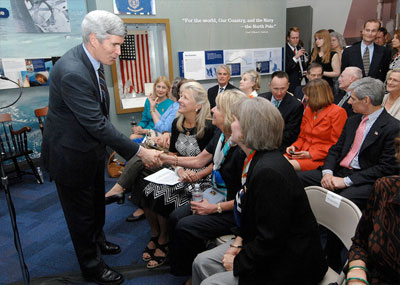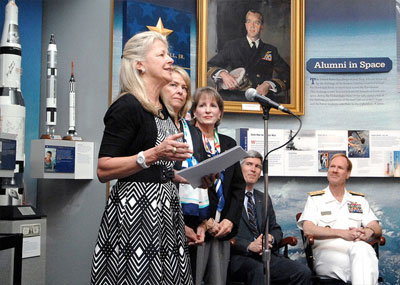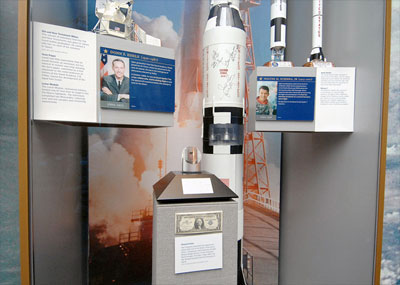NASA Honors Pioneer Astronaut Alan Shepard With Moon RockNASA will posthumously honor Alan B. Shepard Jr., the first American astronaut in space who later walked on the moon, with an Ambassador of Exploration Award for his contributions to the U.S. space program.
Shepard's family members will accept the award on his behalf during a ceremony at 5:30 p.m. EDT on Thursday, April 28, at the U.S. Naval Academy Museum, located at 74 Greenbury Point Road in Annapolis, Md. His family will present the award to the museum for permanent display. NASA's Chief Historian Bill Barry will represent the agency at the event, which will include a video message from NASA Administrator Charles Bolden.
Shepard, a 1945 graduate of the Naval Academy, was one of NASA's original seven Mercury astronauts selected in April 1959. On May 5, 1961, he was launched from Cape Canaveral, Fla., aboard the Freedom 7 spacecraft on a suborbital flight that carried him to an altitude of 116 miles.
Shepard made his second spaceflight as the commander of Apollo 14 from Jan. 31 to Feb. 9, 1971. He was accompanied on the third lunar landing by astronauts Stuart Roosa and Edgar Mitchell. Maneuvering the lunar module "Antares" to a landing in the hilly upland Fra Mauro region of the moon, Shepard and Mitchell deployed and activated a number of scientific instruments and collected almost 100 pounds of lunar samples for return to Earth.
NASA is giving the Ambassador of Exploration Award to the first generation of explorers in the Mercury, Gemini and Apollo space programs for realizing America's goal of going to the moon. The award is a moon rock encased in Lucite, mounted for public display.
The rock is part of the 842 pounds of lunar samples collected during six Apollo missions from 1969 to 1972. The astronauts or family members receiving the award present it to a museum of their choice, where the moon rock is placed on public display.














